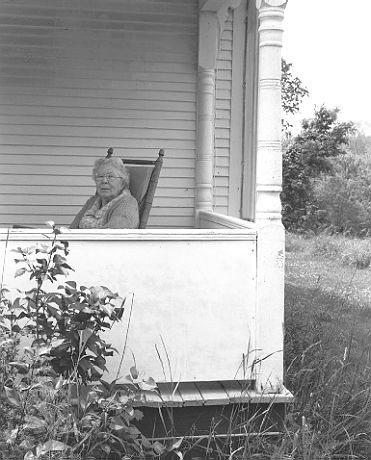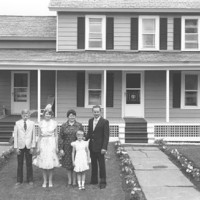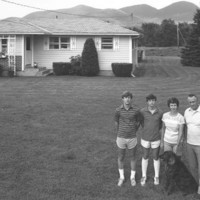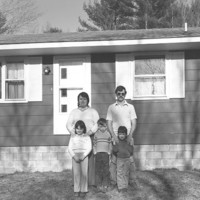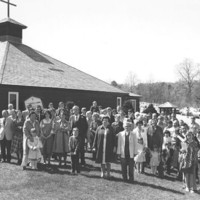SOUTH
Dublin Core
Title
Date
Census Photo Item Type Metadata
ID
Photograph Number
Interview Recording
Side A
Side B
Last Name
First Name Row 1
Image Date
Number of People
Place
School District
Photograph Type
Image File
Miscellaneous Notes
INTERVIEW EXCERPT
For information about her I conducted an interview in July 1981 - also with extra project materials, I have a transcription from an interview Dorothy Offensend did with Gertrude about the history of a mill that was on her property - quote from this interview follows.
Gertrude:
"On November 10, 1880, Smith Hitt sold the mill, by then a sawmill, to William B. and Harriet Woodard. There was a bewildering succession of mortgage deeds between the Woodards and various other parties but apparently they never made a financial success of the mill, and in March of 1889 they sold the property to Walter Rathbun who conducted a very successful lumber business. The lumber for the houses near the West Pawlet slate quarries was produced there. The houses were built before the spruce boards had seasoned. As they shrank, the gum oozed out sealing the cracks thus acting as a form of insulation. This is how the settlement got its name, 'Spruce Gum.'
My own personal knowledge of the mill is limited as we were strictly forbidden to enter it. But between 1910 and 1911, as a five to six year old, my sister and I, with Marion Rathbun, who was a few years older, used to play in the lumber piles. The lumber was stacked in hollow squares in the entire south field, and we could manage to climb up the side and down into them and it was a wonderful playhouse.
Shortly after the end of the First World War, not only trucks came into use, but also sawmills, not run by waterpower but by steam. They were called portable sawmills because they could be set up at the source of supply. I'm not sure about the exact date, but the waterpowered mill was no longer used. There is nothing left now but a little reinforcement on the west side of the river, and on the east side the form which held the sluice gate which carried the water down to the mill. Many people passing by have no idea that there was once a mill there."
(from interview with Dorothy Offensend, Pawlet historian, 1974)
